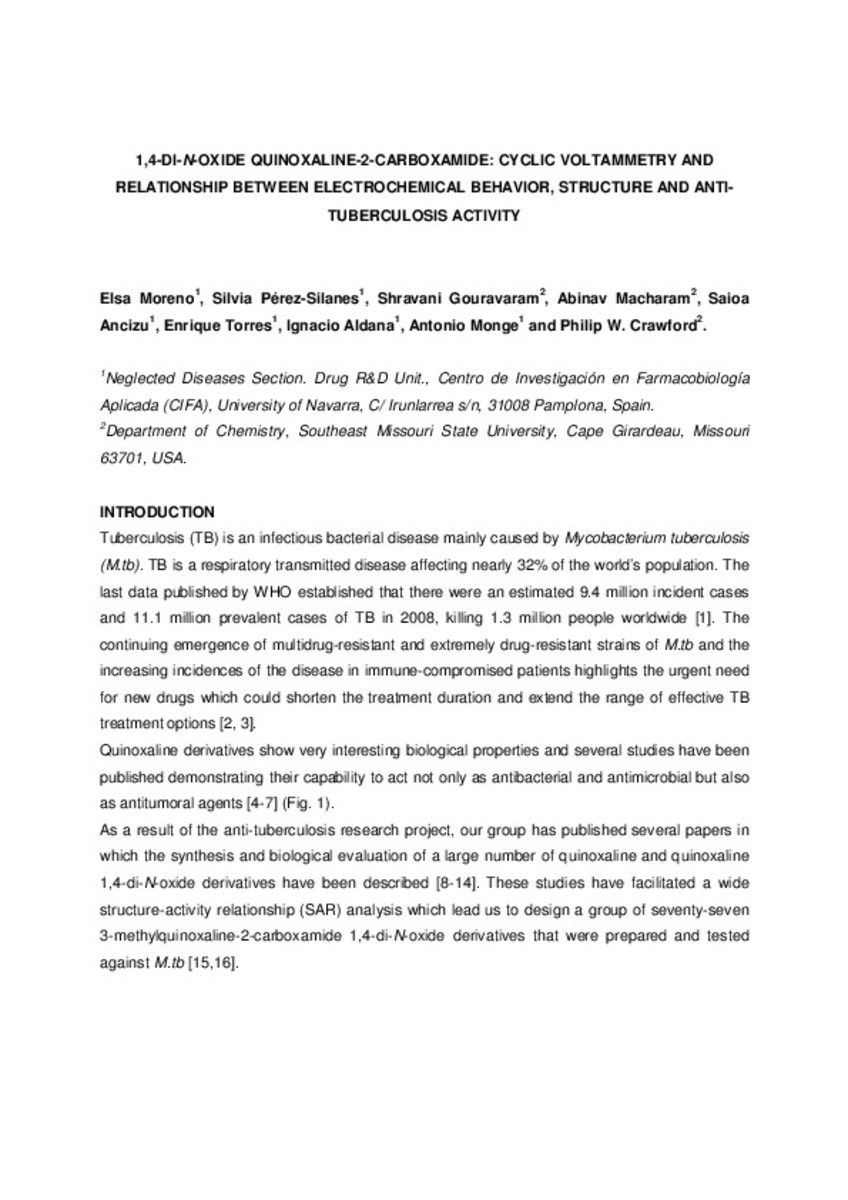1,4-Di-N-oxide quinoxaline-2-carboxamide: Cyclic voltammetry and relationship between electrochemical behavior, structure and anti-tuberculosis activity
Palabras clave :
Electrochemical behavior
Anti-tuberculosis activity
Cyclic voltammetry
Fecha de publicación :
2011
Cita:
Moreno E, Perez-Silanes S, Gouravaram S, Macharam A, Ancizu S, Torres E, et al. 1,4-Di-N-oxide quinoxaline-2-carboxamide: Cyclic voltammetry and relationship between electrochemical behavior, structure and anti-tuberculosis activity. Electrochim Acta 2011;56(9):3270-3275.
Aparece en las colecciones:
Estadísticas e impacto
0 citas en

0 citas en

Los ítems de Dadun están protegidos por copyright, con todos los derechos reservados, a menos que se indique lo contrario.









